Europe · Events · Food and Drink · Regions · Spain · Travel Miscellany · Western Europe
An essential guide to Catalonia
Located in the far north east of Spain, Catalonia is the country’s second most populated autonomous community with a staggering 7.5 million people living inside its borders. Its populace even accounts for over 16% of Spain’s total population. Catalonia’s history and culture are regarded extremely important to those that live within the region, and many appreciate if those visiting are familiar with some of the things that make up part of Catalonia’s identity.
A brief history of Catalonia
The first use of the term ‘Catalonia’ was in the 12th century, and after the fall of Charlemagne in this era, Catalonia united with the neighbouring Kingdom of Aragon. It was still part of the Kingdom of Aragon when Spain became unified following the marriage of Isabella and Ferdinand, but it operated as a separate region with its own language and laws.
However, when Catalonia chose to support the Habsburgs instead of the Spanish in the War of Spanish Succession, King Philip V banned the Catalan language and culture upon his victory. Such was seen as justified punishment for choosing not to support him in the war.
In the 19th century, nationalist sentiment grew in Catalonia and more than a decade later Catalonia was finally recognised as semi- autonomous. This however was short lived. During the Spanish civil war in 1936, the region supported the loosing Republican side. After Franco’s victory, the same suppression of Catalonia took place.
Following the defeats of Hitler and Mussolini, Franco lessened the suppression of Catalonia in fear that he would lose his power in an uprising. After his death in the 1970’s, the country transitioned to a democracy allowing freedom of cultural expression. Since then, the people of Catalonia have been trying to strengthen the Catalan culture and language once again.
The current independence movement started in the early 2010s, its supporters claiming that while Catalonia supports the rest of the country economically, the Catalan culture is still not recognised enough by Spain. This sentiment led to the referendum vote in 2017, an illegal vote which resulted in many political leaders being arrested. These political leaders are awaiting trial in prison but protests continue in support of regional independence.
 Catalan traditions
Tìo de Nadal
A festive log with a funny face. From December 13th up until Christmas day, children ‘feed’ the Tìo with dried fruit and berries. Then on the 25th, they beat the log with a stick singing and encouraging it to ‘poop’ presents. This is how children receive their presents on Christmas day.
Caganer
Typically, the Caganer (a figurine squatting and defecating) is hidden in the nativity scene waiting for children to find it.
La Castanyada
Occurring from 31st October-1st November, this festival marks the end of summer and the beginning of the colder months. Traditionally, warm chestnuts are eaten along with panellets (marzipan tasting almond pastries usually covered in pine nuts). During La Castanyada, All Saints Day is celebrated commemorating loved ones who have passed away.
Catalan traditions
Tìo de Nadal
A festive log with a funny face. From December 13th up until Christmas day, children ‘feed’ the Tìo with dried fruit and berries. Then on the 25th, they beat the log with a stick singing and encouraging it to ‘poop’ presents. This is how children receive their presents on Christmas day.
Caganer
Typically, the Caganer (a figurine squatting and defecating) is hidden in the nativity scene waiting for children to find it.
La Castanyada
Occurring from 31st October-1st November, this festival marks the end of summer and the beginning of the colder months. Traditionally, warm chestnuts are eaten along with panellets (marzipan tasting almond pastries usually covered in pine nuts). During La Castanyada, All Saints Day is celebrated commemorating loved ones who have passed away.
 Important dates and events
La Merce
La Merce celebrates the feast day of Our Lady of Mercy on September 24th. It lasts a whole weekend and consists of other Catalan traditions like Correfoc (a fire run), Sardana (a traditional dance), Gegants (papier maché giants) and Castellers (human towers).
September 11th
This day marks the defeat of Barcelona during the 1714 War of Spanish Succession. It is now known as Catalonia Independence Day.
Sant Jordi
On April 23rd, the day Sant Jordi (the patron saint of Catalonia) died, locals exchange books and roses.
Sant Joan
Sant Joan is also an important figure in Catalonia who is celebrated on June 23rd. Celebrations include fireworks, bonfires, and a warm welcome to the sunny season in Catalonia.
Important dates and events
La Merce
La Merce celebrates the feast day of Our Lady of Mercy on September 24th. It lasts a whole weekend and consists of other Catalan traditions like Correfoc (a fire run), Sardana (a traditional dance), Gegants (papier maché giants) and Castellers (human towers).
September 11th
This day marks the defeat of Barcelona during the 1714 War of Spanish Succession. It is now known as Catalonia Independence Day.
Sant Jordi
On April 23rd, the day Sant Jordi (the patron saint of Catalonia) died, locals exchange books and roses.
Sant Joan
Sant Joan is also an important figure in Catalonia who is celebrated on June 23rd. Celebrations include fireworks, bonfires, and a warm welcome to the sunny season in Catalonia.
 Food and drink
The staple dish of the Catalan region is pan con tomate, toasted bread with tomato, salt, and oil. This is one of the region’s most simple dishes, but also one of the most delicious. Other traditional dishes include rovellos (big mushrooms with a red and orange colour), esqueixada (cod fish with vegetable salad, olive oil, and vinegar), and butifarra (spicy sausage). Dessert wise, crema catalana – a traditional crème brulee- is often enjoyed.
Traditionally, escudella (a stew with vegetables and meat) is served on Christmas day, while canelons (pasta rolls stuffed with leftover cheese and meat from the previous day) are eaten on December 26th.
From November to April, calçotada (similar to onions that are peeled and eaten with salvitxada sauce) are also eaten.
Some typical regional sauces are garlic mayonnaise (allioli) and romesco, a spicy sauce with tomatoes, peppers, garlic, and olive oil.
Cava, Catalonia’s version of champagne, can also be traced back to the region, as well as Moscatell, a sweet wine served during the colder months and especially during La Castanyada.
Food and drink
The staple dish of the Catalan region is pan con tomate, toasted bread with tomato, salt, and oil. This is one of the region’s most simple dishes, but also one of the most delicious. Other traditional dishes include rovellos (big mushrooms with a red and orange colour), esqueixada (cod fish with vegetable salad, olive oil, and vinegar), and butifarra (spicy sausage). Dessert wise, crema catalana – a traditional crème brulee- is often enjoyed.
Traditionally, escudella (a stew with vegetables and meat) is served on Christmas day, while canelons (pasta rolls stuffed with leftover cheese and meat from the previous day) are eaten on December 26th.
From November to April, calçotada (similar to onions that are peeled and eaten with salvitxada sauce) are also eaten.
Some typical regional sauces are garlic mayonnaise (allioli) and romesco, a spicy sauce with tomatoes, peppers, garlic, and olive oil.
Cava, Catalonia’s version of champagne, can also be traced back to the region, as well as Moscatell, a sweet wine served during the colder months and especially during La Castanyada.
 Catalan language
With more than 9 million native speakers of the language, here are few essential Catalan phrases to use during your stay.
Catalan language
With more than 9 million native speakers of the language, here are few essential Catalan phrases to use during your stay.
 Sandra Roig is Marketing Director at AB Apartment Barcelona. AB Apartment Barcelona is an apartment rental agency offering over one thousand short and long term apartments across Barcelona.
If you would like to be a guest blogger on A Luxury Travel Blogin order to raise your profile, please contact us.
Sandra Roig is Marketing Director at AB Apartment Barcelona. AB Apartment Barcelona is an apartment rental agency offering over one thousand short and long term apartments across Barcelona.
If you would like to be a guest blogger on A Luxury Travel Blogin order to raise your profile, please contact us.
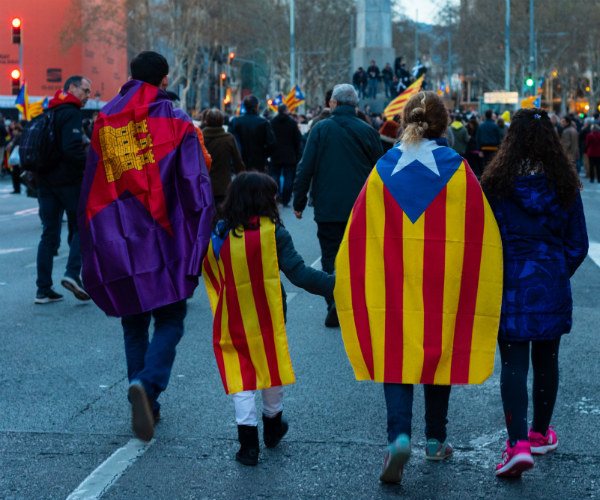 Catalan traditions
Tìo de Nadal
A festive log with a funny face. From December 13th up until Christmas day, children ‘feed’ the Tìo with dried fruit and berries. Then on the 25th, they beat the log with a stick singing and encouraging it to ‘poop’ presents. This is how children receive their presents on Christmas day.
Caganer
Typically, the Caganer (a figurine squatting and defecating) is hidden in the nativity scene waiting for children to find it.
La Castanyada
Occurring from 31st October-1st November, this festival marks the end of summer and the beginning of the colder months. Traditionally, warm chestnuts are eaten along with panellets (marzipan tasting almond pastries usually covered in pine nuts). During La Castanyada, All Saints Day is celebrated commemorating loved ones who have passed away.
Catalan traditions
Tìo de Nadal
A festive log with a funny face. From December 13th up until Christmas day, children ‘feed’ the Tìo with dried fruit and berries. Then on the 25th, they beat the log with a stick singing and encouraging it to ‘poop’ presents. This is how children receive their presents on Christmas day.
Caganer
Typically, the Caganer (a figurine squatting and defecating) is hidden in the nativity scene waiting for children to find it.
La Castanyada
Occurring from 31st October-1st November, this festival marks the end of summer and the beginning of the colder months. Traditionally, warm chestnuts are eaten along with panellets (marzipan tasting almond pastries usually covered in pine nuts). During La Castanyada, All Saints Day is celebrated commemorating loved ones who have passed away.
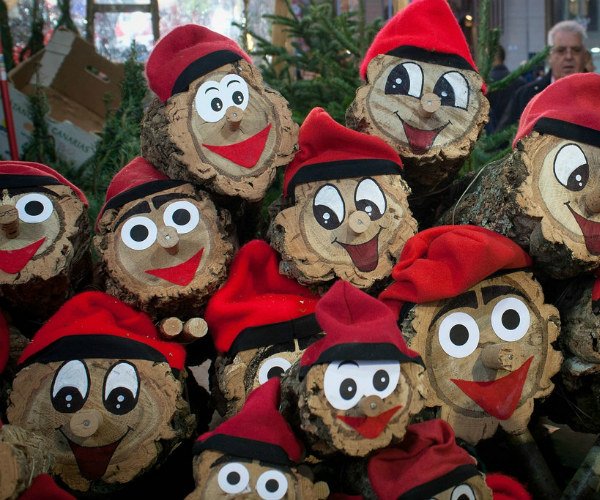 Important dates and events
La Merce
La Merce celebrates the feast day of Our Lady of Mercy on September 24th. It lasts a whole weekend and consists of other Catalan traditions like Correfoc (a fire run), Sardana (a traditional dance), Gegants (papier maché giants) and Castellers (human towers).
September 11th
This day marks the defeat of Barcelona during the 1714 War of Spanish Succession. It is now known as Catalonia Independence Day.
Sant Jordi
On April 23rd, the day Sant Jordi (the patron saint of Catalonia) died, locals exchange books and roses.
Sant Joan
Sant Joan is also an important figure in Catalonia who is celebrated on June 23rd. Celebrations include fireworks, bonfires, and a warm welcome to the sunny season in Catalonia.
Important dates and events
La Merce
La Merce celebrates the feast day of Our Lady of Mercy on September 24th. It lasts a whole weekend and consists of other Catalan traditions like Correfoc (a fire run), Sardana (a traditional dance), Gegants (papier maché giants) and Castellers (human towers).
September 11th
This day marks the defeat of Barcelona during the 1714 War of Spanish Succession. It is now known as Catalonia Independence Day.
Sant Jordi
On April 23rd, the day Sant Jordi (the patron saint of Catalonia) died, locals exchange books and roses.
Sant Joan
Sant Joan is also an important figure in Catalonia who is celebrated on June 23rd. Celebrations include fireworks, bonfires, and a warm welcome to the sunny season in Catalonia.
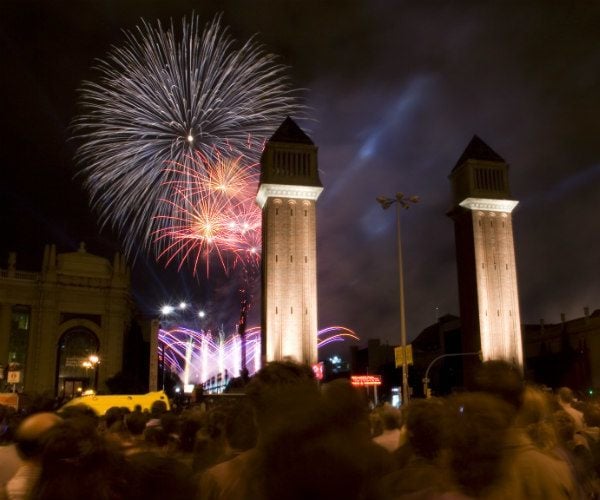 Food and drink
The staple dish of the Catalan region is pan con tomate, toasted bread with tomato, salt, and oil. This is one of the region’s most simple dishes, but also one of the most delicious. Other traditional dishes include rovellos (big mushrooms with a red and orange colour), esqueixada (cod fish with vegetable salad, olive oil, and vinegar), and butifarra (spicy sausage). Dessert wise, crema catalana – a traditional crème brulee- is often enjoyed.
Traditionally, escudella (a stew with vegetables and meat) is served on Christmas day, while canelons (pasta rolls stuffed with leftover cheese and meat from the previous day) are eaten on December 26th.
From November to April, calçotada (similar to onions that are peeled and eaten with salvitxada sauce) are also eaten.
Some typical regional sauces are garlic mayonnaise (allioli) and romesco, a spicy sauce with tomatoes, peppers, garlic, and olive oil.
Cava, Catalonia’s version of champagne, can also be traced back to the region, as well as Moscatell, a sweet wine served during the colder months and especially during La Castanyada.
Food and drink
The staple dish of the Catalan region is pan con tomate, toasted bread with tomato, salt, and oil. This is one of the region’s most simple dishes, but also one of the most delicious. Other traditional dishes include rovellos (big mushrooms with a red and orange colour), esqueixada (cod fish with vegetable salad, olive oil, and vinegar), and butifarra (spicy sausage). Dessert wise, crema catalana – a traditional crème brulee- is often enjoyed.
Traditionally, escudella (a stew with vegetables and meat) is served on Christmas day, while canelons (pasta rolls stuffed with leftover cheese and meat from the previous day) are eaten on December 26th.
From November to April, calçotada (similar to onions that are peeled and eaten with salvitxada sauce) are also eaten.
Some typical regional sauces are garlic mayonnaise (allioli) and romesco, a spicy sauce with tomatoes, peppers, garlic, and olive oil.
Cava, Catalonia’s version of champagne, can also be traced back to the region, as well as Moscatell, a sweet wine served during the colder months and especially during La Castanyada.
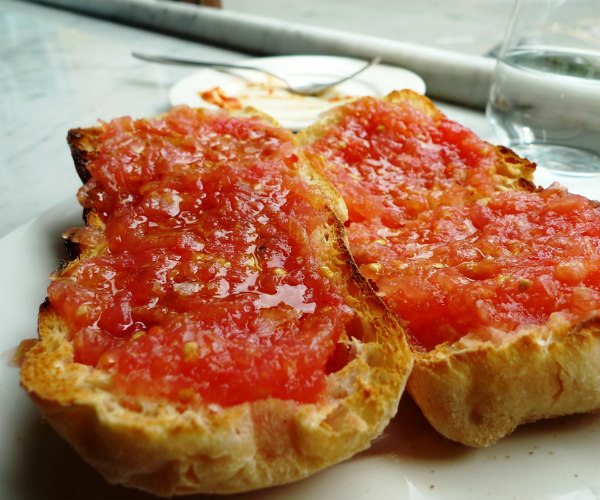 Catalan language
With more than 9 million native speakers of the language, here are few essential Catalan phrases to use during your stay.
Catalan language
With more than 9 million native speakers of the language, here are few essential Catalan phrases to use during your stay.
- Hello – Hola ‘ohh-lah’
- Goodbye – Adéu ‘ah- day- oo’
- Good Morning- Bon Dia ‘bon dee-ah’
- Good Afternoon – Bona Tarda ‘bon-ah tar-dah’
- Goodnight – Bona nit ‘bon- ah neet’
- How are you? Com estàs? ‘cohm eh-stas’
- Please. Si us plau ‘see ooh-s plough’
- Thank you! Merci! ‘mer-see’
- You’re welcome. De res. ‘dah ress’
- I’m sorry. Ho sento ‘oo sen-two’
- Do you speak English? Parles angles? ‘par-less ang-less’
- Street. Carrer. ‘Kah-rerr’
- Cheers! Salut! ‘sah- loot’
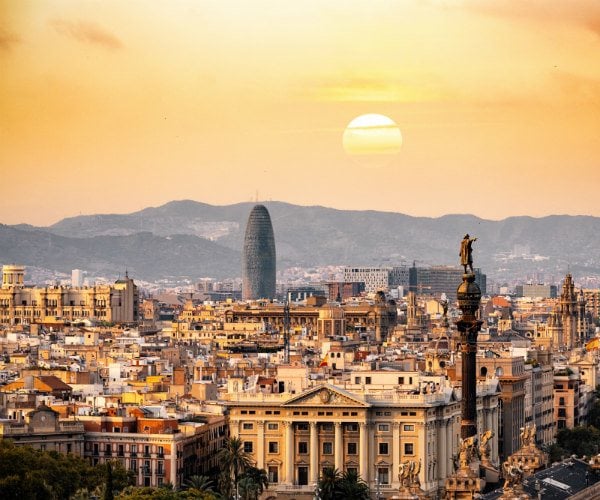 Sandra Roig is Marketing Director at AB Apartment Barcelona. AB Apartment Barcelona is an apartment rental agency offering over one thousand short and long term apartments across Barcelona.
If you would like to be a guest blogger on A Luxury Travel Blogin order to raise your profile, please contact us.
Sandra Roig is Marketing Director at AB Apartment Barcelona. AB Apartment Barcelona is an apartment rental agency offering over one thousand short and long term apartments across Barcelona.
If you would like to be a guest blogger on A Luxury Travel Blogin order to raise your profile, please contact us.Did you enjoy this article?
Receive similar content direct to your inbox.



Many of us in Britain are used to regional pride. Never forget that “Yorkshire is God’s own country” or that Cornwall would be an independent state if it could have its own way. Yet, Catalonia takes regional pride to the next level. They are immensely proud of their distinctive culture which sets them apart from the rest of the country. I’ve always found, when talking with people from Catalonia, that is wise to be very respectful of their traditions to keep the conversation amicable.
Hi Sue, thanks for your comment. We are proud to live in the region of Catalonia, and love that you find our traditions and culture just as interesting! Hope to see you in Barcelona soon.
The section on useful Catalan phrases is helpful. I’m frequently ashamed of myself and my fellow British travellers. We really are terrible when it comes to learning languages. There is so much truth in that cliche of the Englishman abroad shouting loudly and slowly in English hoping that the locals will understand. One of my New Year resolutions is to make more of an effort when I travel. There’s always a lot of dead time at the airport and on the plane so I’m going to use that time to mug up on the local lingo. The locals really do appreciate the fact that you’ve made an effort even if your pronunciation is appalling.
Hi Alex, thanks for your comment! We completely agree with your comment and know that locals love it when travellers speak the lingo, particularly in Catalonia. Good luck with your lingual resolution, we’re happy to help you if you’re stuck!
I enjoyed the potted political history of the region. It’s important to have a grasp of the key issues before you travel to any country or region.
It’s this spirit of independence and resentment of centralised power which gives such a bite to the Barcelona v Madrid football matches.
Many of my friends have travelled to watch that game without appreciating what’s really going on.
Hi Gary, it’s so important to make sure you’re clued up on the country before you visit, and we really appreciate that you have learnt so much about Catalonia. Feel free to come over and test out your knowledge…
This is fantastic, and I’m really glad you’ve covered some of the history as well as the traditions. The whole referendum, and some of the scares that ensued, was quite appalling. I visited Salou a few years ago and met with a few Catalonians who were incredible passionate about Catalan and felt it was misunderstood, that their freedom from Spain was something they really wanted and I learned a lot that I never knew before about the history, finances between the countries, tourism and its effects. I went during the summer and pretty much missed any kind of celebration so I think it would be great to visit at a time when there’s something authentic and traditional going on, especially around Christmas perhaps. I do really like the idea of Sant Jordi, it’s very sweet to show respect to their patron saint by changing roses and books.